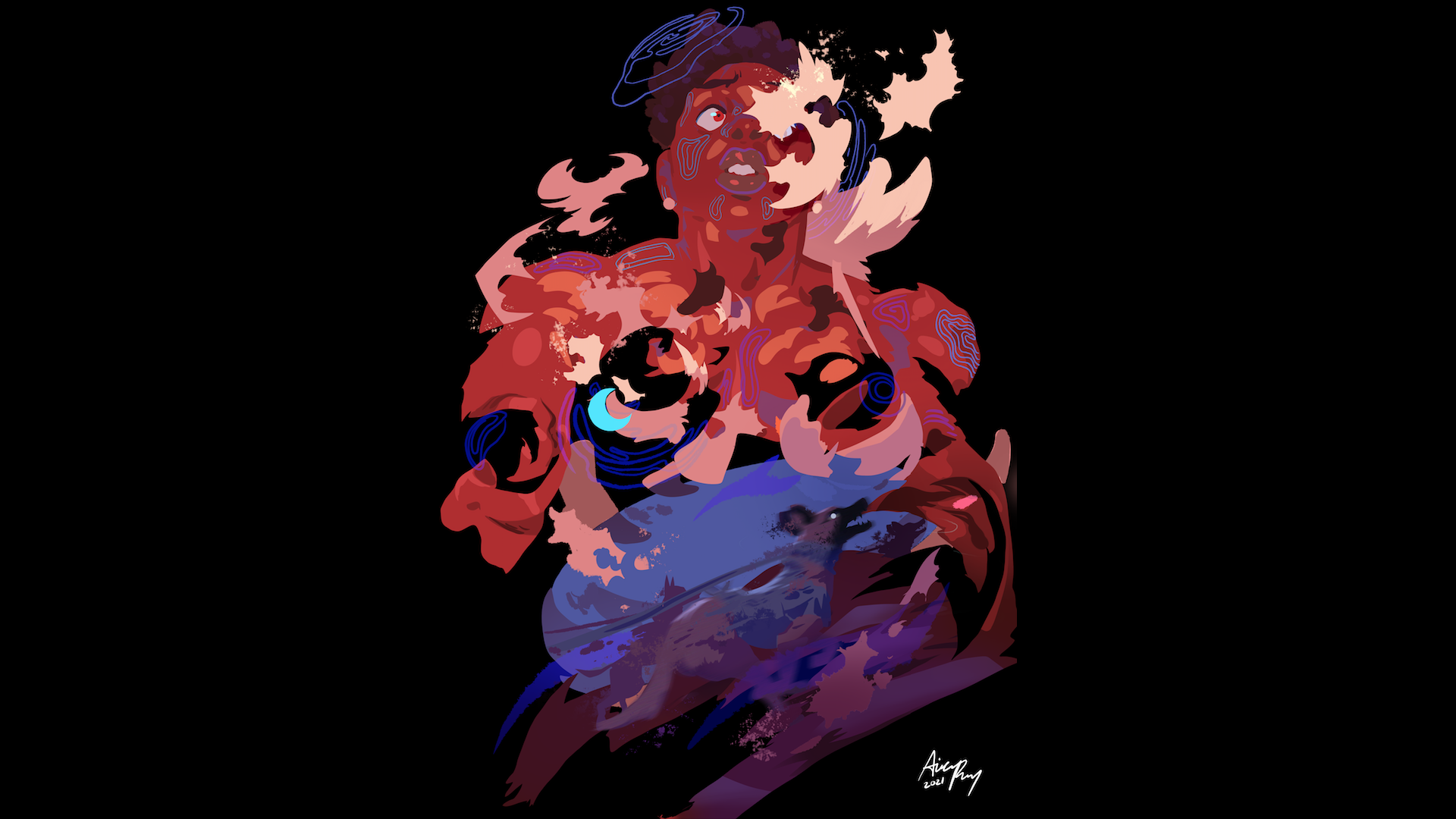(…) Eu estava deitada de costas, sobre um banco de areia, numa região de dunas desérticas entre o oceano e os restos de uma antiga reserva de mata atlântica.
Depois de conter o vômito, voltei a concentrar-me nos braços, tentando extrair da paralisia, primeiro, pequenos movimentos de dedo. Eu sabia que não era capaz de me pôr a correr cedo o suficiente para me afastar dali antes de ser atingida pela próxima sirene, por isso decidi cavar. Se eu me escondesse sob a terra, as ondas de terror não fariam mais que atordoar alguns de meus sensores, alentando minha capacidade de reação sem, entretanto, me deixar paralisada.
Naquele momento era a patrulha que me assustava mais, por isso deixei que parte de meus sensores táteis se concentrassem na vibração da terra, enquanto os outros trabalhavam em devolver a meu corpo sua capacidade de ação. Tão logo as mãos e antebraços se liberaram da paralisia, comecei a cavar; o resto do corpo foi se soltando à medida que eu mergulhava na duna.
Não contei quanto tempo levou até que eu soterrasse o corpo por inteiro, mas pressenti que as sirenes chegariam logo e, um instante depois de fechar o buraco, ela veio.
Esta durou mais que o habitual.
Mesmo atordoada pelos efeitos da onda, eu cavei tanto quanto pude, sem parar, mergulhando fundo no banco de areia, com esperança de que a minha marca hormonal não fosse captada pela patrulha. Eu sabia que, com o corpo em ebulição pela quantidade extrema de alterações bioquímicas que vinha fazendo, minha presença era detectável de longe pelo novo sistema de reconhecimento de que as patrulhas haviam incorporado.
E ainda que ali, sob a terra, eu tivesse alguma vantagem, eu jamais seria capaz de escapar às eventuais investidas de uma patrulha inteira. Por isso a pressa em chegar mais e mais fundo. No estado da transição em que estava não me era ainda possível simplesmente desmanchar e espalhar meu corpo na terra. (…)
Capítulo 0 de “O Nascimento de Urana”, texto originalmente publicado no “Jornal Nossa Voz” (Casa do Povo, São Paulo, 2017).

English Version
(…) I was lying on my back, on a sandbar, in a region of desert dunes between the ocean and the remains of an old Atlantic Rainforest Reserve.
After containing the vomit, I concentrated back on the arms, trying to extract from the paralysis, small movements of the finger, first. I knew I was not able to start running early enough to get away from there before being hit by the next siren; so I decided to dig. If I hid under the earth, the waves of terror would only stun some of my sensors, holding my ability to react without, however, paralyzing me.
At that moment, it was the patrol that scared me the most, so I let some of my tactile sensors focus on the vibration of the earth while the others worked to bring back to my body the ability to take action. As soon as the hands and forearms were released from the paralysis, I began to dig; the rest of the body loosened as I plunged into the dune.
I did not count how much time it took me to bury my whole body, but I sensed the sirens would come soon, and a second after closing the hole, it screamed indeed.
This one lasted longer than usual.
Even stunned by the effects of the wave, I dug as deep as I could, non-stop, plunging deep into the sandbar, hoping that my hormonal mark would not be captured by the patrol. I knew that with my body burning because of the extreme amount of biochemical changes I had been working on, my presence was detectable from afar by the new recognition system recently incorporated by the patrols.
And even though there, beneath the earth, I had some advantage, I would never be able to escape the occasional onslaughts of an entire patrol. In the state of the transition I was in, it was not yet possible for me to simply undo and spread my body through the earth. That’s why I rush to get deeper and deeper. (…) / Translation by Jéssica Oliveira e Bruna Barros
Part 0 of “The Birth of Urana”, a short story originally published by “Jornal Nossa Voz” (Casa do Povo, São Paulo, 2017). The english version was originally published by “NIRIN NGGAY”, an artist book by Stuart Geddes and Trent Walter commissioned for the 22nd Sydney Biennale Reader (Sydney, 2020).
Translation: Jéssica Oliveira & Bruna Barros

